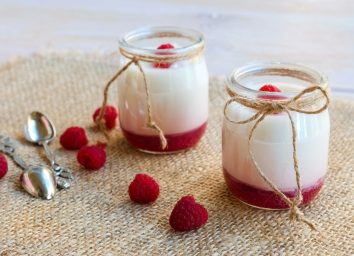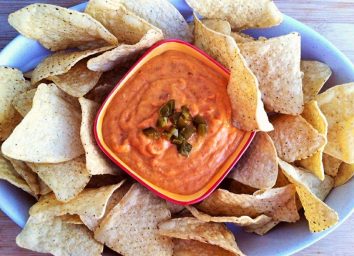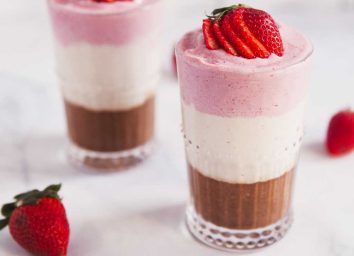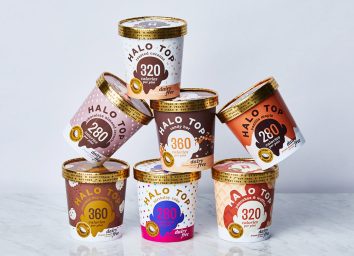Milk Alternatives 101: Your Guide To Every Dairy-Free Milk Substitute
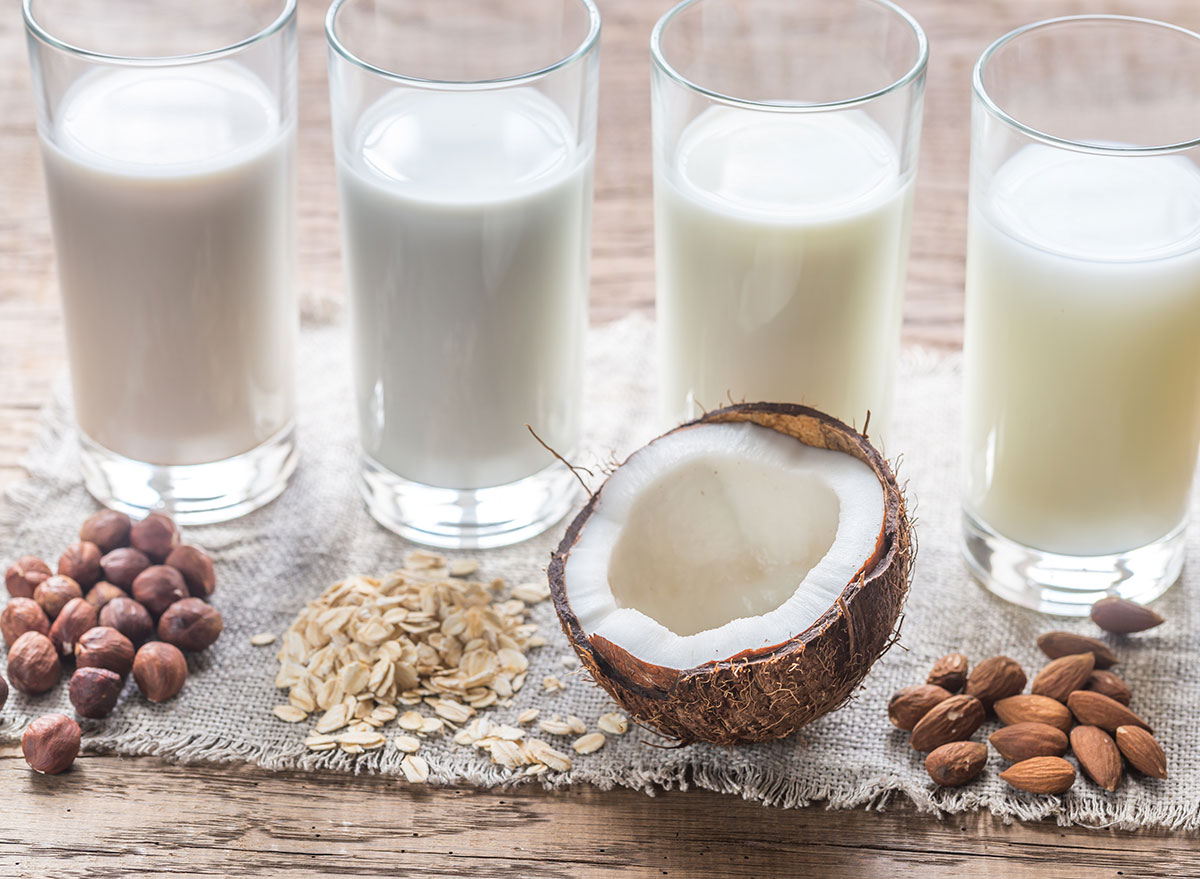
Many of us grew up reciting the phrase, “Got milk?” These days, that slogan might need to be amended to “Got dairy-free milk substitutes?”
Made by soaking rice, beans, grains, or nuts in water and then blending and straining, milk alternatives are vegan, dairy-free substitutes for dairy milk. And these alt-milks are having a moment. Between 2012 and 2017, demand for dairy-free milk products grew by a whopping 61 percent to the tune of well over $2 billion.
Why people opt for milk substitutes over dairy.
Why the growing demand for dairy-free milk? People might seek out these milk alternatives for several reasons, says Maxine Yeung, MS, RD, CPT, CWC, a registered dietitian, personal trainer, and founder of The Wellness Whisk.
- You have lactose intolerance. “The most common reason I see that people drink milk alternatives is because they cannot tolerate lactose: the sugar found in milk,” Yeung says. “Experts estimate that after infancy at least 65 percent of the world’s population becomes lactose intolerant. This means they cannot digest lactose due to low levels of the enzyme lactase in the body.”
- You want to cut back on calories. “Others choose alternative milks as a way to reduce their overall calorie intake.” Cow’s milk contains between 11 and 12 grams of lactose sugar. An average 8-ounce glass of milk contains 130 total calories. An unsweetened milk alternative, on the other hand, can be as low as 30 calories per glass.
- You’re looking for a flavored, creamy beverage option. “People may also prefer milk alternatives to add a variety of flavors to their diets or if they simply do not like the taste or texture of milk,” Yeung says.
- You’re concerned about animal practices in the dairy industry. People might also ditch dairy milk products because of concerns about the environmental impacts of the industrial dairy industry. Dairy farming is linked to greenhouse gas emissions, the degradation of ecologically important land, and the contamination of water resources.
No matter a person’s reasons for seeking out milk alternatives, the good news is there are more dairy-free substitutes than ever before. So without further ado, let’s take a look at how to choose the best dairy-free milk!
What to look for in the best milk substitutes.
There are tons of milk alternatives ranging from soy milk to nut milks, rice milk, banana milk (really!) and more. So how do you separate the wheat from the chaff (or, er, the more nutritious milky substance from the less nutritious one)?
- Look for a nutritional profile that’s similar to real milk. “If you’re looking for a milk alternative as a source of nutrition, I recommend choosing one that has similar protein and carbohydrate amounts to milk: about 8 grams of protein and 12 grams of carbohydrates per 8 ounces,” Yeung says.
- Choose unflavored and unsweetened options. And beware of hidden sugars! “Some brands of milk alternatives add sugar to the beverages even if they say unflavored on the container,” Yeung says.
- Whenever possible, avoid additives. “Many milk alternatives also contain additives such as gellan gum, guar gum, and carrageenan that help to thicken the beverages,” Yeung says. “While these are ‘generally recognized as safe’ by the FDA, some people complain of gastrointestinal issues after consumption. More research needs to be done on their effects within our bodies.”
- Avoid any product that could trigger allergies. This may be obvious, but it’s important! “Do not use any milk alternative [if] you may have an allergy or intolerance to its ingredients,” Yeung says. “For example, avoid nut milk alternatives if you are allergic to nuts.”
The best dairy-free milk alternatives, ranked by nutrition.
Now that you have some idea of what to look for in a milk alternative, let’s pit these products head-to-head!
Here’s a roundup of some of the most popular dairy-free milks on the market, ranked by Yeung in order of most to least nutritionally sound. (Yeung notes that because each product has pros and cons, ranking them can be tricky. She has strong feelings about rankings 1 through 5, but after that, it’s a bit of a tossup.)
1. Soy Milk
This plant-based beverage is made by soaking soybeans and then grinding them with hot water. It tends to have a nutty taste that’s sometimes fortified with other flavors, such as vanilla.
Pros: Yeung says the main benefit of soy milk is that it’s “closest in nutrition to cow’s milk for calories and protein per 8-ounce serving.” One cup of unsweetened soy milk has approximately 80 calories, 4 grams of fat, and 7 grams of protein. “[It] also has 2 grams of fiber per serving.”
Cons: That said, soy milk won’t work for folks who are allergic to soy or who are concerned about the potential side effects of soy consumption, such as inflammation, gassiness, or exposure to pesticides.
Bottom line: Worth drinking if you’re not allergic to soy and you don’t consume soy in excess from other sources.
2. Pea Milk
Pea milk is made by harvesting (you guessed it!) peas, milling them into a flour, separating out the pea protein, and then blending that protein with water and other ingredients. While that might not sound super appetizing, the result is a surprisingly smooth and creamy brew.
Pros: Yeung says pea milk boasts several benefits. Chief among them? “[It’s] the only non-soy, plant-based milk alternative that has a similar protein content to cow’s milk.” Additionally, it has “fewer calories than cow and soy milk, and… additional benefits like omega-3 fatty acids.” There’s also some evidence that pea milk is a relatively eco-friendly milk alternative.
Cons: As for pea milk’s downsides? It’s low in B-12, so it’s important that people who drink this beverage are getting that nutrient from other sources. It also tends to be higher in sodium than dairy or soy milk.
Bottom line: Worth drinking.
3. Hemp Milk
Although it’s derived from the Cannabis sativa plant, hemp milk should not be confused with cannabis. This completely non-psychoactive milk alternative is made by soaking hemp seeds and then grinding them and mixing them with water. The result is a creamy, nutty beverage that’s devoid of common allergens such as dairy or soy.
Pros: When it comes to hemp milk’s benefits, it’s all about the healthy fats. “Hemp is a good source of omega-3 and omega-6 fatty acids,” Yeung says. It also boasts around 20 percent of the RDA for iron and approximately 3 to 5 grams of protein per serving.
Cons: What you won’t find much of in hemp milk is calcium, so people who opt for this milk alternative will need to make sure they’re getting plenty of calcium from other sources. Additionally, some hemp milks are loaded with added sugars.
Bottom line: Worth drinking (but opt for products without a ton of sugar).
4. Flaxseed Milk
Remember when flax was the superfood du jour? Well, even though flaxseed products aren’t as popular as they once were, they still pack a nutritional punch. Flaxseed milk can be produced in several ways, such as blending flax seeds with water and then straining out the ground seeds.
Pros: Much like hemp milk, Yeung says flaxseed milk stands out for being a good source of omega-3 fatty acids. It also boasts (low levels of) calcium, phosphorus, and vitamins A and D.
Cons: Flaxseed milk’s main downside? It has very little protein.
Bottom line: Worth drinking as long as you aren’t relying on it to add protein to your diet.
5. Oat Milk
Oat milk is gaining notoriety in coffee shops across the country for its rich, creamy profile. Like flaxseed milk, oat milk can be produced in several ways. Most commonly, milled oats are mixed with water, strained, and possibly flavored with add-ins.
Pros: Yeung says this plant-based beverage stands out for having a bit more protein than nut milks (approximately 4 grams per serving). This can be a boon for people who rely on milk alternatives to add some extra protein into their diet. Oat milk also boasts several micronutrients, including copper, folate, magnesium, thiamin, zinc, and more.
Cons: That said, oat milk doesn’t really contain healthy fats, and it tends to have more carbs and calories than many dairy-free milk substitutes.
Bottom line: Worth drinking in moderation (unless you’re on a low-carb diet).
6. Coconut Milk
There’s a lot of diversity in the world of coconut milk, which is produced from the white flesh of mature coconuts. Depending on the details of its production process, Yeung says coconut milk can have varying levels of fat.
Pros: One of the main pros of coconut milk, Yeung says, is that it has a strong flavor profile that will appeal to anyone who likes the taste of coconut. From a nutritional standpoint, coconut milk can also contain healthy fats and several vitamins and minerals, including copper, vitamin C, folate, iron, magnesium, manganese, phosphorous, potassium, and selenium.
Cons: As for coconut milk’s potential downsides? These milk substitutes may be higher in calories than some of the options here, and it’s not a sound source of the vitamins A and D that are typically found in cow’s milk. Some coconut milk products are also low in protein.
Bottom line: Worth drinking (just avoid options with added sugar).
7. Rice Milk
What do you get when you boil brown or white rice, strain out the grains, and possibly add in some flavorings to the leftover liquid? Rice milk, of course! This foamy milk has a thin, light texture and a nutty flavor profile.
Pros: A main perk of rice milk is that it’s a great alternative for people who have dairy, nut, or soy allergies, Yeung says.
Cons: That being said, rice milk comes with a few nutritional downsides. Because it’s made from a grain, it’s often higher in carbs and calories than some milk alternatives. Yeung says it also “tends to be higher in sugar, and some brands add oil and salt,” which can make rice milk high in sodium. It’s also extremely low in protein as well as most vitamins and minerals.
Bottom line: Not worth drinking as much as other options on this list (unless you’re allergic to other dairy-free substitutes).
8. Mixed Nut Milks, Almond Milk, and Cashew Milk
These milk substitutes are usually produced by soaking nuts in water, draining them, pureeing them, and blending them with hot water. Some products will also incorporate additional flavors and added vitamins or minerals.
Yeung ranked each of these options (mixed nut milks, almond milk, and cashew milk) the same, because they tend to have similar pros and cons.
Pros: Yeung says nut milks are commonly fortified with vitamins and minerals and are low in calories per serving.
Cons: “Nut milks do not provide much nutrition in terms of macronutrients,” Yeung says. In particular, they tend to be low in protein. “Many people think that just because a milk alternative is made from nuts, which are good sources of protein and fat, that the beverage will also be a good source of protein and fat.” But that’s rarely the case. “For instance, almond milk has 1 gram of protein… per 8 ounces.”
Bottom line: Worth drinking if you like the taste and texture of nut milks. Just don’t rely on them to provide macronutrients.
9. Banana Milk
Milk from bananas? Believe it. Banana milk substitute is made by blending bananas and water and then possibly adding in other milk alternatives or flavorings. Because there’s so much variation when it comes to how banana milk is produced, it’s tough to make blanket statements about this beverage.
Pros: If banana milk isn’t made with added sugars, then it can provide a touch of natural sweetness without a crazy sugar content. Another possible perk is that Banana milk can be low in carbs and calories (though it isn’t always).
Cons: Beyond that, banana milk tends not to have an impressive nutritional profile. It’s usually low in both macro- and micronutrients, which means the primary reason to drink these beverages is taste. (Sometimes, that’s reason enough!)
Worth drinking: Not so much from a nutritional perspective.
